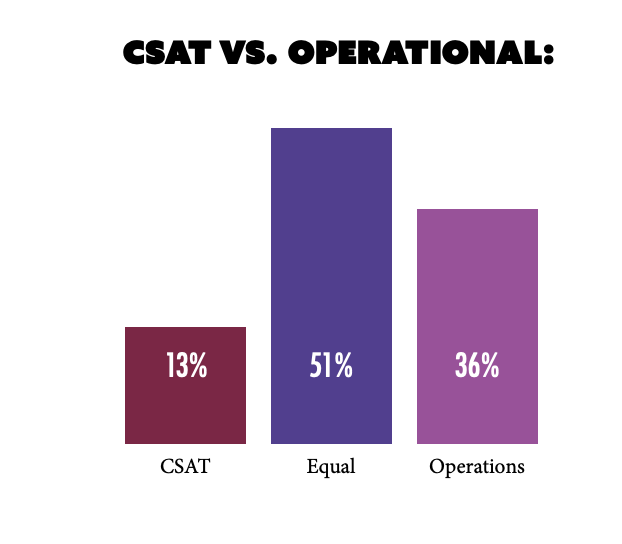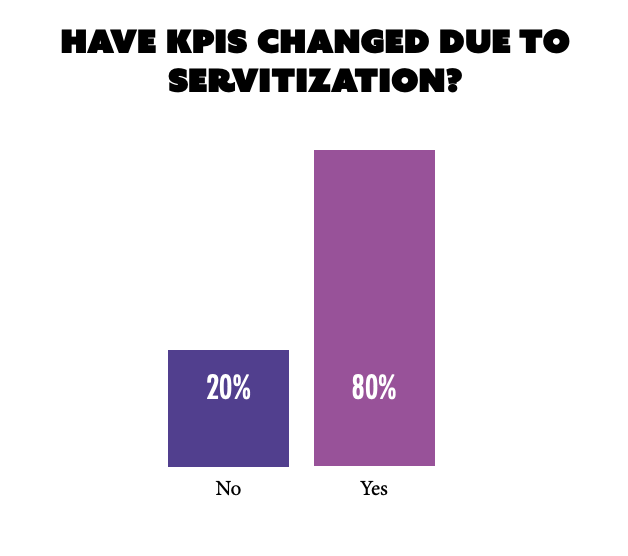The Evolving Trends in KPIs in Field Service Management
As we have seen so far, the average number of KPIs that were measured by field service companies is between 4 and 7 KPIs, which 40% of respondent companies stated they tracked. However, the research also revealed that while those measuring more KPIs than the average are currently in the minority, the research data would suggest they are perhaps slightly ahead of the curve. Indeed, just under half of the respondent companies (44%) stated that they had increased the number of field service related KPIs that they were tracking – but the crucial question is why?
 As one respondent explained during a follow up interview around the research findings, “The simple fact is that from within a field service operations perspective, we have moved relatively quickly from occupying a space where customer satisfaction was something that was a by-product of what we were generally measured upon, an after-thought to an extent, to become a primary measure of the success of not just the field service operation but also the wider business itself.”
As one respondent explained during a follow up interview around the research findings, “The simple fact is that from within a field service operations perspective, we have moved relatively quickly from occupying a space where customer satisfaction was something that was a by-product of what we were generally measured upon, an after-thought to an extent, to become a primary measure of the success of not just the field service operation but also the wider business itself.”
This insight reveals two things. Firstly, it highlights just how profound the broad shift we have seen in field service of the operation being primarily positioned as a cost centre to becoming a profit centre within its own P&L has been.
This impact has been significant both in terms of how field service delivery is both viewed and managed internally within many organisations. Secondly, it also brings to the fore just how crucial customer satisfaction has become as a fundamental KPI to be measured. Customer Satisfaction is measured by almost all (91%) of the respondents within the survey and identified as the single most crucial KPI measured by just over a third of respondents (37%).
As discussed in the previous section, these statistics show substantial continuous growth in the importance of CSAT as a core KPI related to field service success when compared to figures from past years. However, it is when we cross-reference the responses from this section with the survey with those companies who have indicated that they have already adopted a servitized business model that the striking reality becomes clear.
100% of those companies surveyed who met this criterion listed CSAT as the single most crucial KPI they measured. This indicates a highly credible correlation between field service companies adopting a servitized business and placing CSAT at the core of the metrics they use to measure success.
The Impact of Servitization…
So, let’s take a moment longer to focus on those companies who are already offering a servitized business solution. Within this subset of respondents, we can, as we would anticipate, also see this correlation between the adoption of new KPIs and the adoption of new business models. Our research shows that over 80% of those companies that are offering servitized business solutions have had to change the metrics they use to measure success within their business.
“In a servitized business model, you are offering something far more complex than the traditional break-fix approach which ultimately was always fairly transactional at its core” commented one of the respondents whose business offered servitized solutions. “In a servitized world that transactional relationship between vendor and customer is replaced with a much deeper relationship, something more akin to a true business partnership, and as such CSAT metrics including Net Promoter Score (NPS), but also more sophisticated touchpoints across all sections of both organisations become crucial to our mix of KPIs,” they added.
The importance of NPS within the mix of KPIs used by those offering servitized or outcome-based solutions was also flagged up as necessary by another respondent who spoke to us on a follow-up interview within the program. “Of course, NPS has become very important as our business model has become a lot more customer-centric,” he commented.
 “However, a lot of our operational KPIs have also changed quite significantly in recent years as we have adopted both IoT on our assets and also offer outcome-based services.” “Previously, our key metrics were all based around SLA resolutions. However, now we have moved into guarantees of uptime we have had to adapt the way we measure the service we deliver for those contracts. Key for us now are KPIs such as Mean-Time-to-Repair and Mean-Time-To-Failure, which we have spent much time analysing to be able to predict how often and when we need to act to meet uptime expectations.”
“However, a lot of our operational KPIs have also changed quite significantly in recent years as we have adopted both IoT on our assets and also offer outcome-based services.” “Previously, our key metrics were all based around SLA resolutions. However, now we have moved into guarantees of uptime we have had to adapt the way we measure the service we deliver for those contracts. Key for us now are KPIs such as Mean-Time-to-Repair and Mean-Time-To-Failure, which we have spent much time analysing to be able to predict how often and when we need to act to meet uptime expectations.”
Another factor of moving away from break-fix to a servitized business model is that companies are also moving away from reactive to proactive field service delivery and this is, in turn, having a significant impact in the way successful service delivery is measured. As another respondent commented, “We used to be 100% reactive, but we are now down to 40% reactive and 60% proactive. Ideally, we would want to get that reactive figure down even further close to the 20% mark if possible.”
“From an operations perspective, this means that we are able to be far more efficient in the way we approach our field service workflow and as such the KPIs that are important to us now reflect that somewhat more with Technician Utilisation and First-Time-Fix Rates both being important measurements that we are moving along the right path.”
What does seem to be clear however is that the move towards servitization does seem to be driving a trend towards companies measuring more KPIs overall – however, it does appear that these are additional subsets of KPIs within what remains fairly traditional core KPIs. So what are these core pillars of business performance measurements and are these changing in a world of servitization and digitalisation, or do the fundamentals of business remain the same, always?
Want to know more?
FSN PRO and FSN PRO+ users can find the full paper this article is taken from in the premium resource library.
Find out more about our premium membership options here













